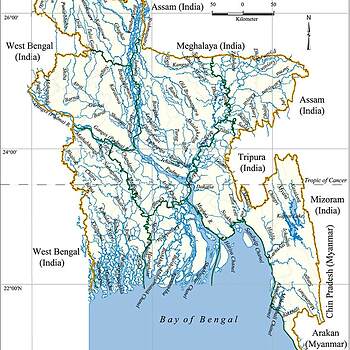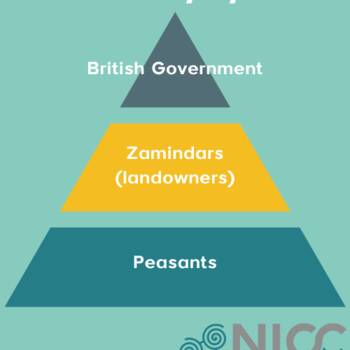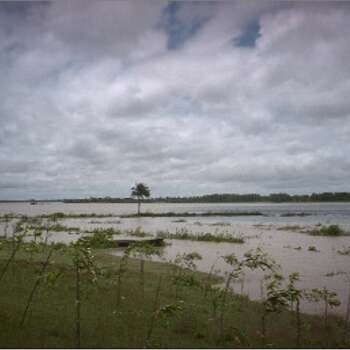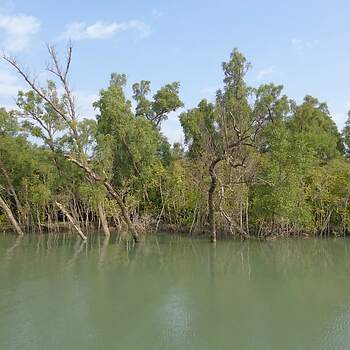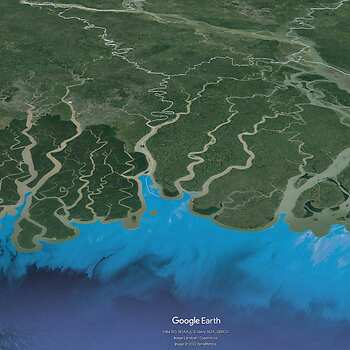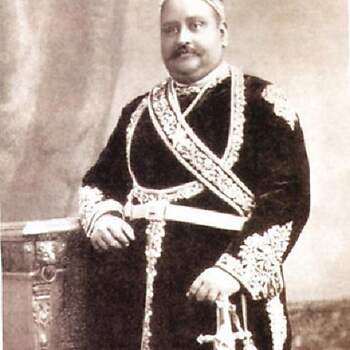Water Management
Prior to the 1960s, ‘zamindars’ (landowners) held the responsibility of water management in Bangladesh. These hereditary landowners held large tracts of land and ruled over their peasants. In this feudal system communities would maintain the canals for irrigation and drainage and when there was flooding they would build small localized mud walls that they managed jointly with the zamindars. These walls could be removed or rebuilt fairly quickly depending on needs. The notable trait of this system was its dynamic and adaptive approach suited for the active delta of Bangladesh. The zamindari system continued until 1956 when it was abolished.
Embankments have been constructed and managed in Bangladesh for a long time. When the British arrived in Bengal in 1757, they found a widespread system of embankments covering the land. These were built under the Moguls, who imposed a stiff land tax to finance them. The British abolished this tax and the embankments fell into disrepair. Since then, however, widespread incidences of local initiatives with regard to the construction of embankments started and can still be found. British colonial rule stopped in 1947 with the independence of India and Pakistan, with East Pakistan being the current Bangladesh until its independence in 1971.
During the British rule there were not many water management activities initiated by the colonial government in this part of what was then India. During the Pakistan times only a few small-scale irrigation works were taken up on localized basis, apart from the Ganges-Kobadak Project, which was a large irrigation project and was envisaged to provide irrigation facilities to 120,000 ha of cultivable land (source: Chadwick and Datta, DFID study, nd).
In 1954, 1955 and 1956, Bangladesh, then still known as East Pakistan, suffered from disastrous floods that drew worldwide attention. As a response to these three consecutive floods, the UN fielded the Krug Mission. Professor Willem Johan van Blommenstein, a well-known Dutch water engineer, was one of the members of this Krug Mission that took place in 1956-1957. The mission provided advice to the Pakistani government about water and flood dynamics in East Pakistan. It recommended setting up a Department of Waterways, modeled after ‘Rijkswaterstaat’, the Dutch agency for public works and water management. This authority was established in 1959 and was first called EPWAPDA (East Pakistan Water and Power Development Authority) till the Bangladeshi independence when it was renamed the Bangladesh Water Development Board (BWDB).
WASH
The first piped drinking water system in Bangladesh was in Dhaka and had already been established in 1874 by Khwaja Abdul Ghani, the aristocrat that ruled Dhaka under the British colonial authorities. The system was fed by a water treatment plant in Chadnighat near the bank of the river Buriganga. In some other urban areas ‘modern’ piped water supply systems were constructed with reservoirs and treatment systems e.g. in Khulna in 1921 and Rajshahi in 1937. The in 1936 established Department of Public Health Engineering (DPHE) then became the national lead agency for provision of drinking water supply and waste management in the country. After independence from the British in 1948, the Department of Public Health Engineering of the Pakistani government became in charge of drinking water supply as well as sanitary sewers and storm-water drainage. For Dhaka and Chittagong cities separate municipal water authorities were established in 1963, as Water Supply & Sewerage Authorities (WASA).
In rural areas drinking water generally was supplied through shallow wells, ponds, and open water, usually without government involvement and without any attention to water safety. There were no facilities for sanitation and/or sewerage, with open defecation being common.
